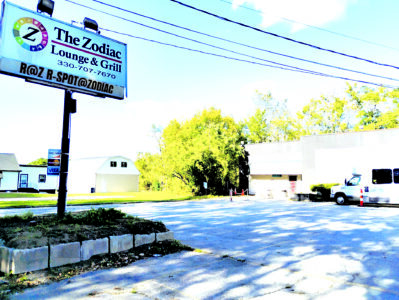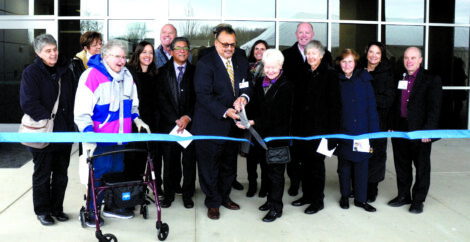Bow hunters kill 23 deer so far in Mill Creek MetroParks hunt
YOUNGSTOWN — The Mill Creek MetroParks has changed the way it confirms the number of white-tailed deer killed by hunters selected through an Ohio Department of Natural Resources lottery, but there were 23 confirmed deer reductions in the parks during the first three weeks — all through bow hunting.
Another four deer reductions were reported by hunters, but it is not yet confirmed that they took place on MetroParks properties instead of private property, the MetroParks says.
SHARPSHOOTING REPORTED
Meanwhile, a Youngstown deer supporter told The Vindicator on Tuesday that about 5 p.m., U.S. Department of Agriculture-employed sharpshooters were at that time removing deer in the area of the Mill Creek Golf Course just north of U.S. Route 224 in Boardman.
Deer supporter Mickey Drabison said the roads into that area were blocked, which has been reported as a method employed during such reductions to keep the public away. The MetroParks received permission from the ODNR recently to remove 50 deer this season, which ends Feb. 1.
HUNTING STARTED SEPT. 28
The deer reductions carried out by hunters using the ODNR lottery system began Sept. 28, but the first two deer were taken the next day, Sept. 29, with one doe killed in the Collier Preserve in Canfield and one in Mill Creek Wildlife Sanctuary East in Beaver Township, according to data provided Tuesday by Mill Creek MetroParks Natural Resources Manager Rachel Sobnosky. One doe was taken Oct. 1 in Hitchcock Woods in Boardman and two more does Oct. 2 in Collier Preserve.
The following week, 13 confirmed deer reductions took place in various parks plus two more unconfirmed reductions, Sobnosky said.
The data shows that six of the 13 were taken at Sawmill Creek Preserve in Canfield, three from Mill Creek Wildlife Sanctuary East, two from Huntington Woods in Boardman and one from Hitchcock Woods. One of two antlered deer taken that week did not indicate what park the deer came from.
A second antlered deer has not been confirmed yet, and one doe has not been confirmed yet because she is waiting to hear back from hunters, Sobnosky said.
In the third week, five confirmed deer deer reductions took place, and two more were not confirmed yet. Of the five confirmed, two came from Collier Preserve and one each came from Hitchcock and Huntington Woods, the data shows.
METHOD CHANGE
Sobnosky explained Tuesday that the method of confirming the number of deer removed from MetroParks properties is being handled differently this year to avoid the situation that occurred last year — the number being revised downward by 25 after the reductions were finalized in the spring, after the reductions were over.
This year, Sobnosky is checking with the hunters in the days after the hunter harvested his or her deer to make the corrections more quickly.
Sobnosky explained that the “raw harvest data” comes to the MetroParks from the ODNR, Division of Wildlife. Each hunter is required to report his or her harvest to ODNR and to the MetroParks.
“However, not everyone follows that rule and reports it to me,” Sobnosky explained. “When a hunter tags a deer and reports it to the ODNR, they do not have to indicate where the deer was harvested. However, they do have to answer the question ‘Is this a controlled hunt'” and also have to say which county the deer was harvested from, she stated.
Because Mill Creek MetroParks has the only controlled hunt in Mahoning County, when they answer “yes” to that question, ODNR assumes it was taken from a Mill Creek MetroParks property and reported it to the Mill Creek MetroParks that way, she said.
“However, it is a frequent occurrence that hunters do not understand what a controlled hunt is and incorrectly answer yes to that question when the deer was actually harvested on private property, not MetroParks property,” she said.
Mill Creek MetroParks asked ODNR for permission to reduce the deer population by 100 this fall, but the ODNR trimmed that number to 50.
However, in an Oct. 1 email to Sobnosky, when he notified her of the reduction to 50 deer, ODNR Assistant Wildlife Director Geoff Westerfield stated that he is “always open to discussion of an increase in the number of deer permitted. If you are close to fulfilling the initial 50 deer and request an increase, I will reassess the situation to determine if additional deer are warranted at that time.”
Westerfield stated that in reaching the initial 50 figure, he spent a “considerable amount of time assessing” the Mill Creek MetroParks request, carried out an assessment of the data Sobnosky submitted and data from previous years.
He said he also considered the “multiple site visits I have made to Mill Creek Park over the last month and the conversations we have had recently.”



